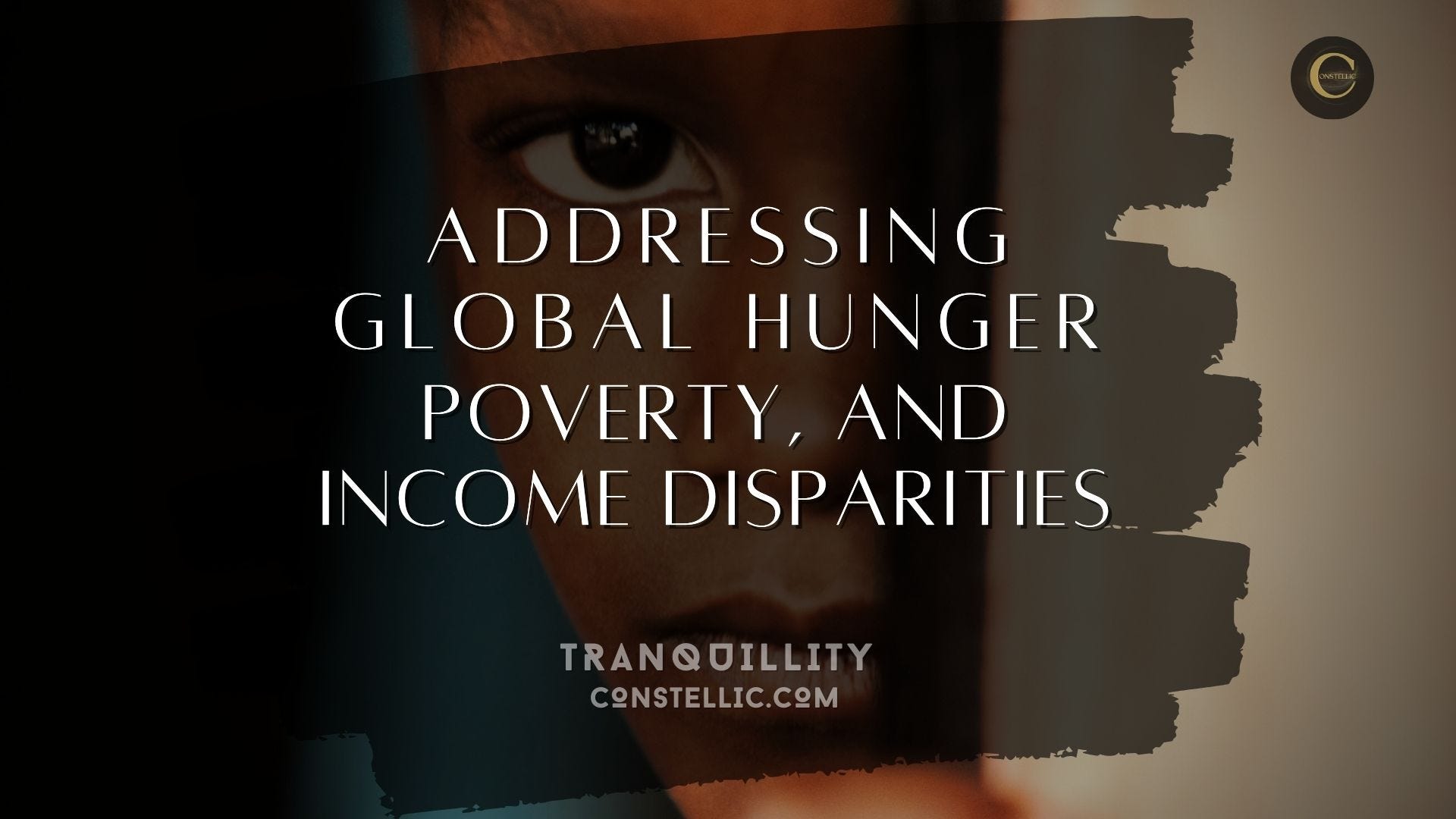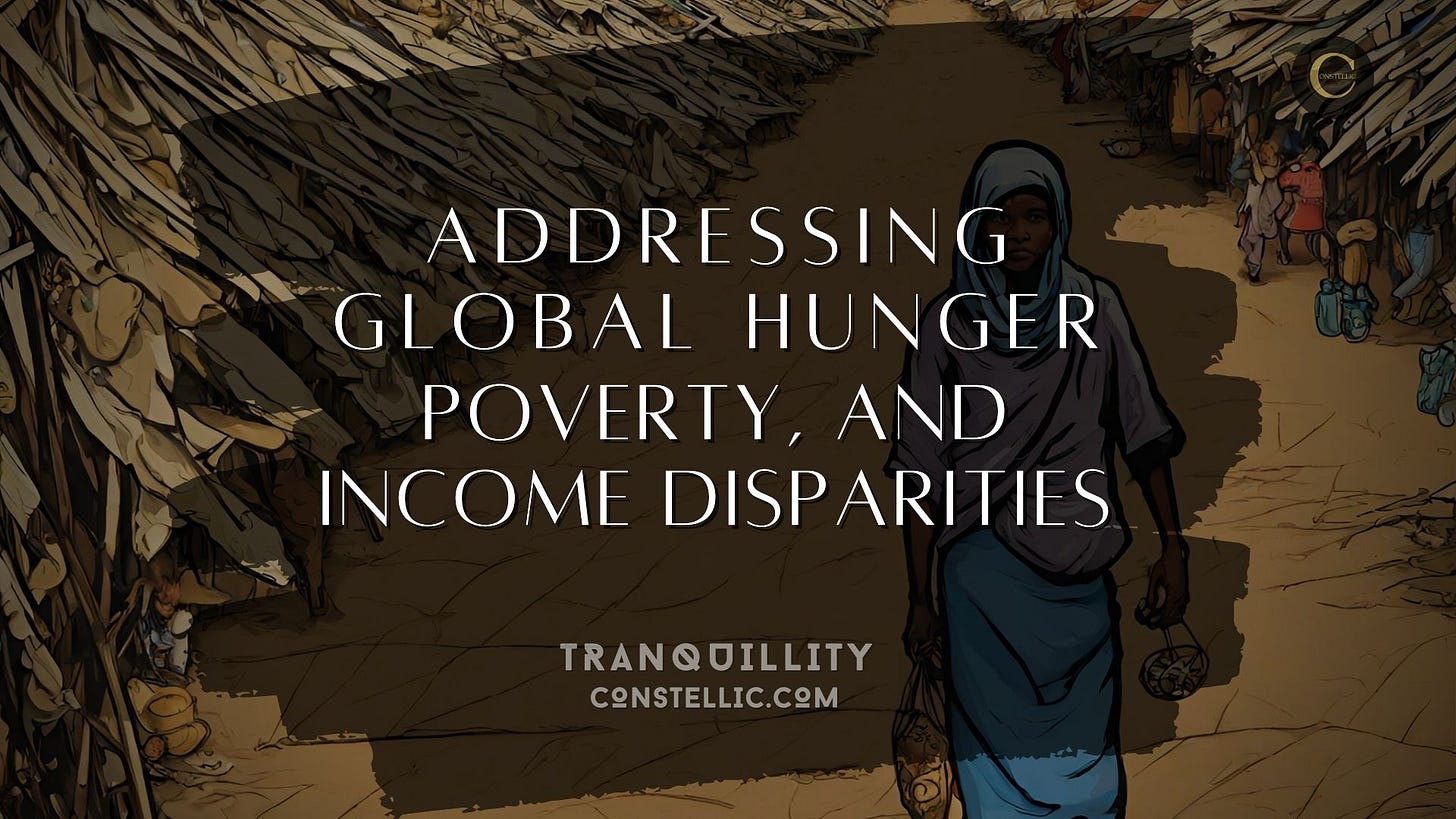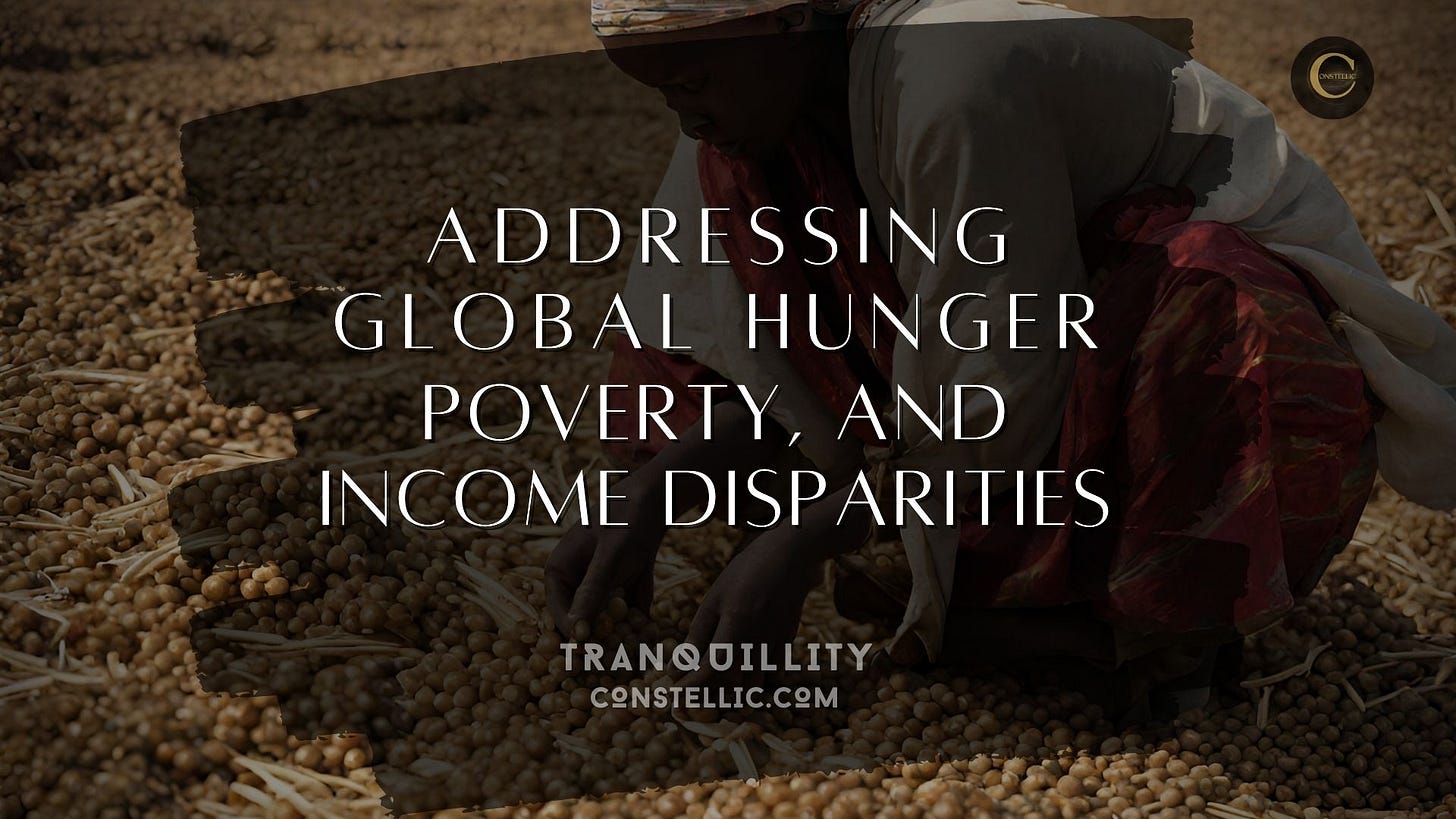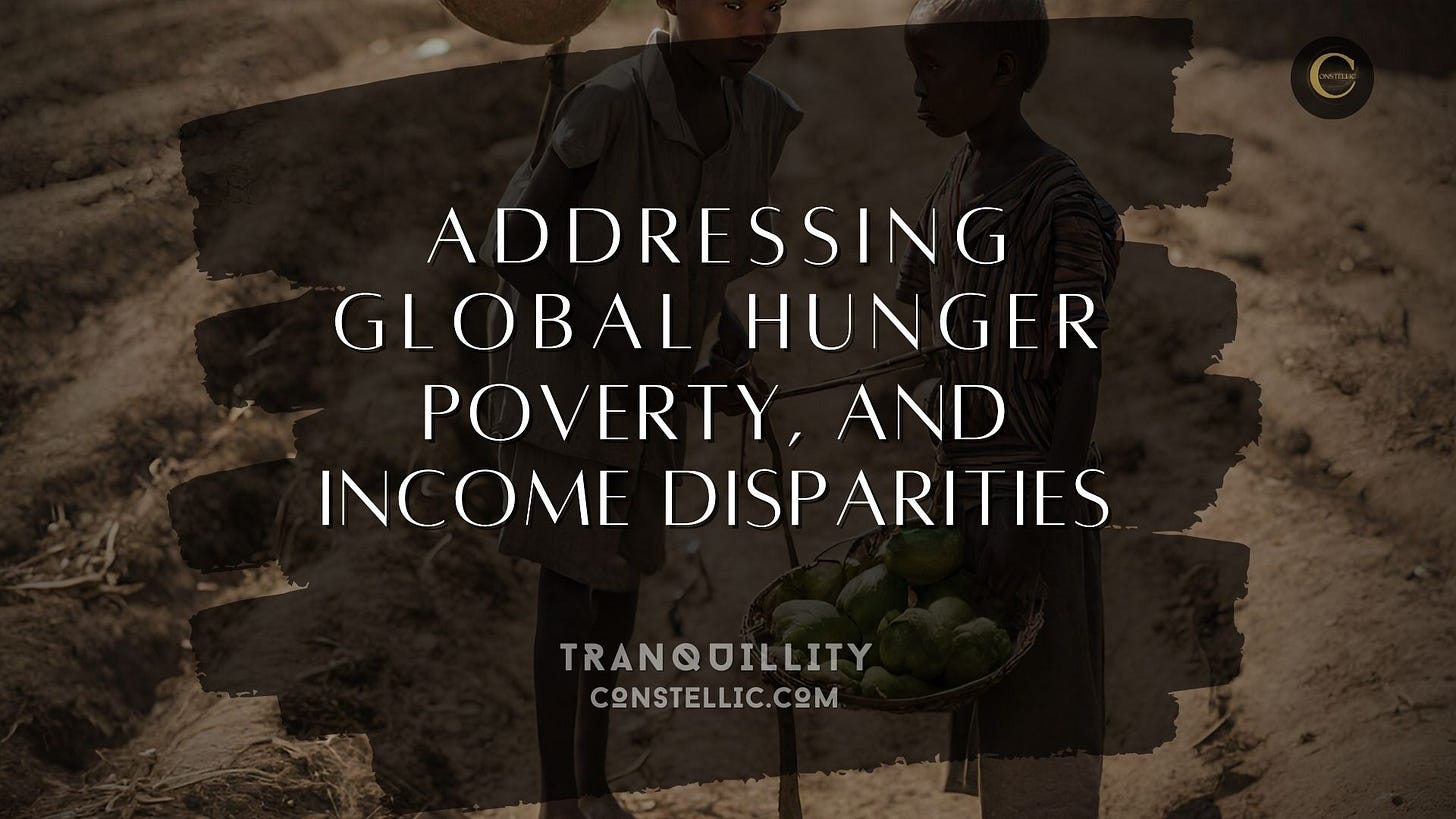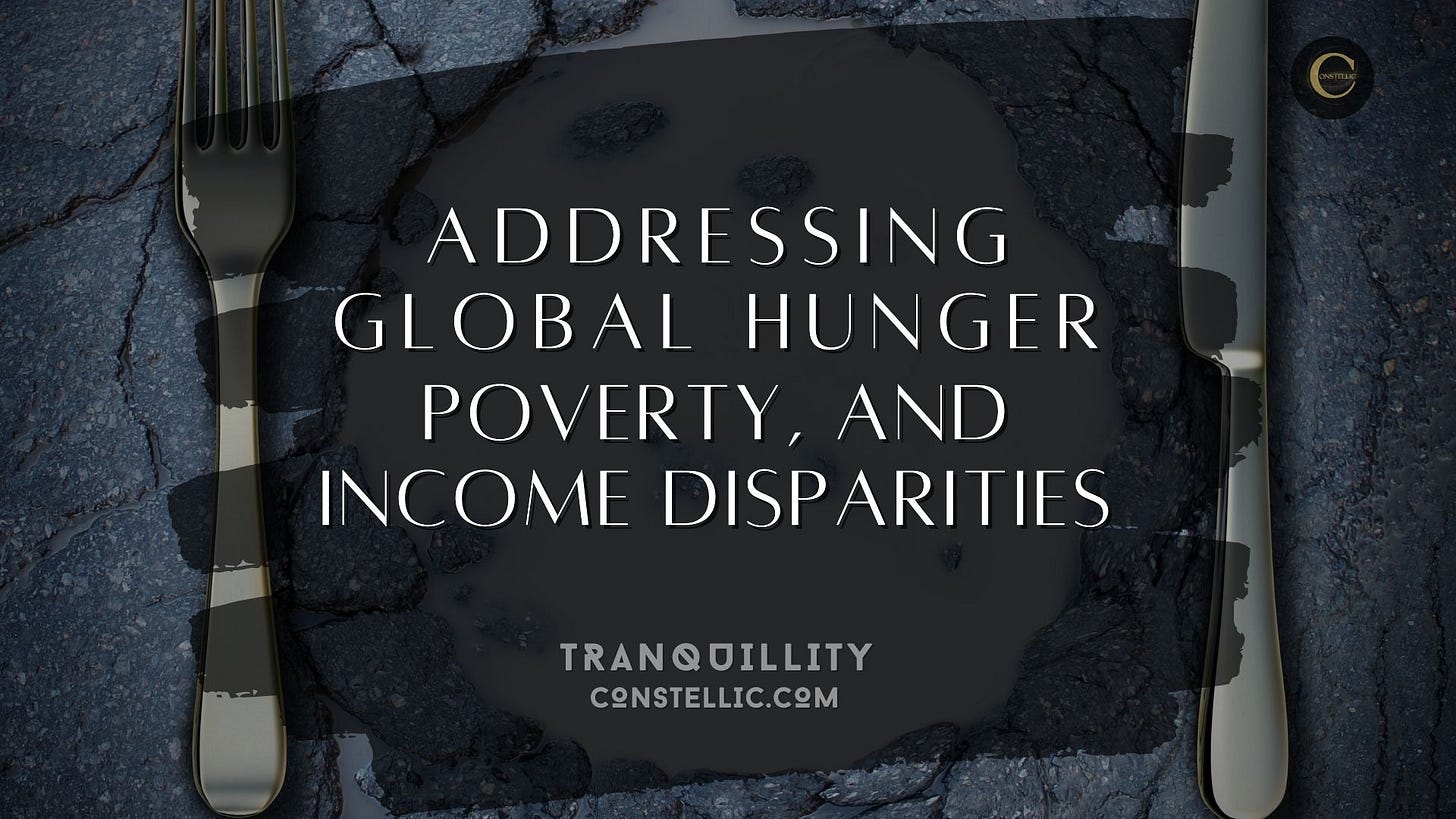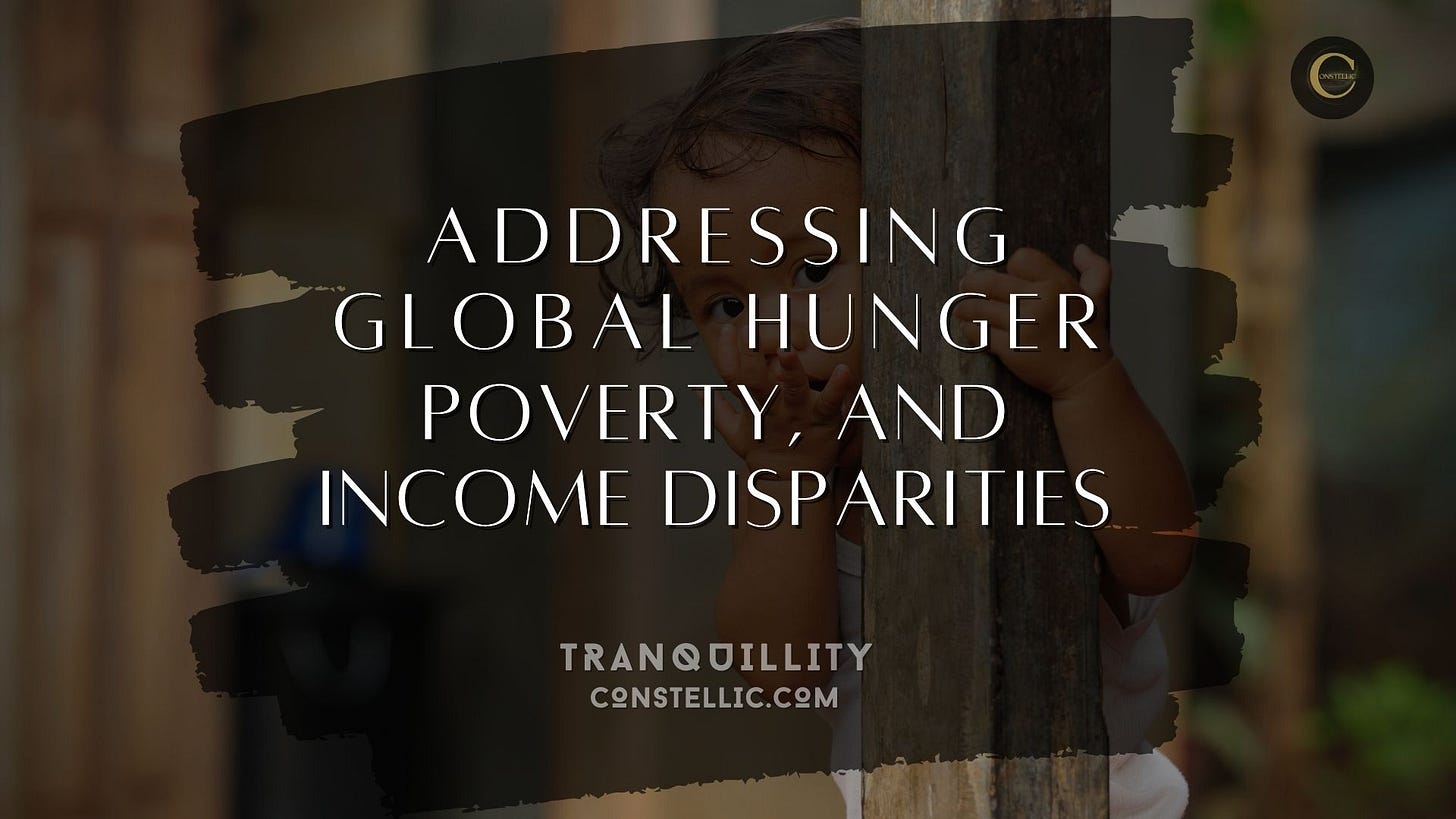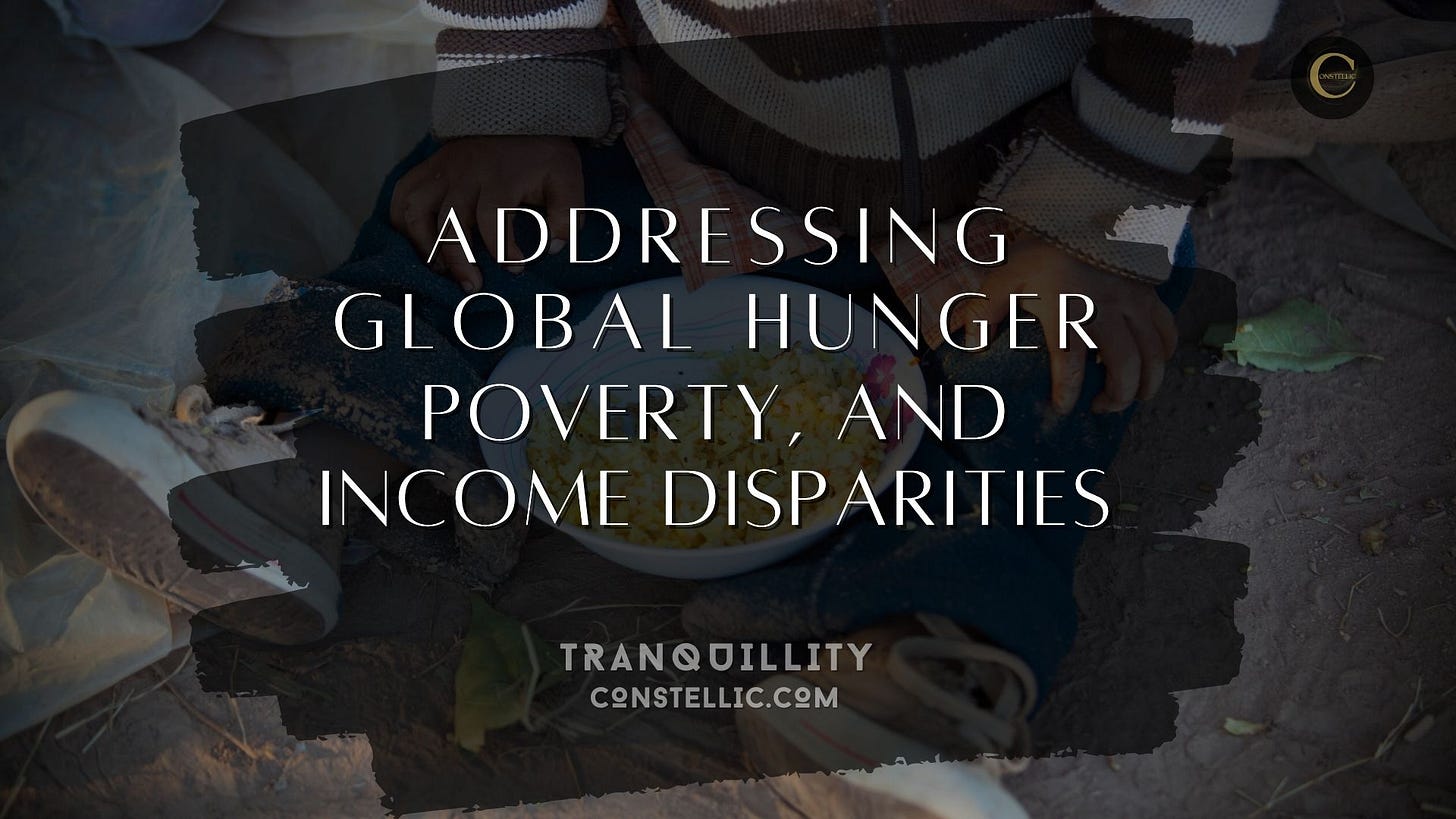Addressing Global Hunger, Poverty, and Income Disparities
A Comprehensive Analysis of Strategies to Alleviate The Masses From Forced Misery.
Hunger, poverty, and income disparities continue to afflict millions worldwide, despite decades of efforts aimed at their eradication. These issues are not only morally unacceptable but also threaten global stability, economic growth, and social cohesion.
To effectively tackle these challenges, concrete measures, and real steps must be taken now without delay. Instead of sitting and watching how it has been for ages, we need to explore the root causes of hunger, poverty, and income disparities and present data-driven recommendations to address them comprehensively and effectively on a global scale.
Understanding the Complexity
2.1. Global Hunger
In 2020, approximately 800 million people, or 10% of the global population, experienced chronic hunger, according to the Food and Agriculture Organization (FAO). That’s a billion people. This is an estimate, it could be more, not because there is not enough food on this earth but because it is being used yet again as a weapon of war and control. This figure represents an alarming increase, partly attributed to the disruptive impact of the COVID-19 pandemic on food security but these figures have kept climbing, and something is not being done right. Regions such as Sub-Saharan Africa and Southern Asia bear the brunt of this crisis, housing nearly 60% of the world's undernourished population.
2.2. Poverty
As of 2020, the World Bank's data indicates that 689 million people, or 9.2% of the world's population, lived in extreme poverty, defined as surviving on less than $1.90 per day. But again, numbers are debatable, conditions are not. Critics argue that there has been some improvement over the years, but this sad figure underscores the persistent challenge of poverty. It disproportionately affects sub-Saharan Africa and South Asia.
2.3. Income Disparities
Income disparities have widened significantly over recent decades, posing a grave threat to social cohesion and economic stability. Economic inequality has been identified as one of the foremost global concerns. The wealthiest 1% of the world's population possesses wealth exceeding the combined wealth of the remaining 99%. These disparities persist both within and between nations, contributing to social unrest and instability.
Examining Root Causes
To devise effective solutions, it is essential to scrutinize the root causes of these issues that can impact anyone, anywhere when left unchecked:
3.1. Access to Education
Lack of access to quality education and denial of access to online resources perpetuate poverty and income disparities. Globally, more than 250 million children and adolescents were out of school before the pandemic, with many lacking basic literacy and numeracy skills.
3.2. Unemployment and Underemployment
Scarce employment opportunities, particularly for youth, result in unemployment and underemployment, trapping individuals and families in cycles of poverty.
3.3. Healthcare Accessibility
Poor health and limited access to healthcare services exacerbate poverty and hunger as individuals struggle to work and support their families when afflicted by illness.
3.4. Gender Imbalance
Gender disparities in education, employment, and access to resources further magnify poverty and income disparities. Women are often disproportionately affected by hunger and poverty and are also subjugated to harsher and cruel punishments or even death.
3.5. Political and Economic Inefficiencies
Corruption, inadequate governance, and economic inefficiencies can obstruct the equitable distribution of resources and opportunities, compounding poverty and income disparities.
A Comprehensive Approach
Addressing global hunger, poverty, and income disparities necessitates a holistic strategy. Here are concrete measures and steps that must be taken:
4.1. Accessible and Quality Education
4.1.1. Enhanced Investment: Governments and international organizations should significantly increase investments in education, prioritizing homeschooling and improving quality and accessibility from early childhood through tertiary education.
4.1.2. Women's Empowerment: Including women in education by challenging cultural and societal norms that inhibit girls' access to education either at home or online.
4.2. Employment Opportunities
4.2.1. Employment Creation: Governments and businesses should implement targeted economic policies aimed at employment creation, particularly for marginalized communities and youth.
4.2.2. Skills Development: Expand vocational and technical training programs to equip individuals with relevant skills for employment in emerging sectors as well as the traditional sectors.
4.3. Healthcare Access
4.3.1. Universal Healthcare: Develop and implement universal healthcare systems to ensure equitable access to quality healthcare services for all.
4.3.2. Preventive Measures: Promote health education and preventive healthcare measures to alleviate the burden of illness and its economic consequences.
4.4. Women and Girls
4.4.1. Women's Empowerment: Advocate for women's economic and political empowerment, encompassing access to credit, land ownership, and leadership roles.
4.4.2. Legal Reforms: Enforce laws protecting women's rights, including measures against gender-based violence and discrimination.
4.5. Governance and Transparency
4.5.1. Anti-Corruption Efforts: Implement anti-corruption measures and enhance transparency in governance and economic systems.
4.5.2. Inclusive Policies: Develop policies prioritizing inclusive growth, ensuring that economic benefits are distributed equitably.
Financing and International Cooperation
Effectively implementing these measures requires financing and global collaboration:
5.1. Aid and Development Assistance
5.1.1. Increased Aid Commitment: Donor nations should elevate their official development assistance (ODA) to support poverty reduction and sustainable development initiatives in recipient countries.
5.1.2. Debt Management: Explore options for debt relief and restructuring in highly indebted countries to free up resources for development.
5.2. International Partnerships
5.2.1. Multilateral Cooperation: Strengthen multilateral organizations such as the United Nations and the World Bank to facilitate coordinated global efforts in addressing hunger, poverty, and income disparities.
5.2.2. Public-Private Collaboration: Promote partnerships between governments, non-governmental organizations (NGOs), and the private sector to leverage resources, expertise, and innovative solutions.
Monitoring and Evaluation
6.1. Data Collection and Analysis
Establish and reinforce robust data collection and analysis systems to monitor progress, identify areas requiring attention, and hold governments and organizations accountable for their commitments.
6.2. Stakeholder Engagement
Engage affected communities, civil society organizations, and local governments in the design and implementation of poverty reduction programs to ensure responsiveness to local needs and challenges.
Consistent Implementation
The enduring crises of global hunger, poverty, and income disparities demand rigorous and multifaceted solutions. The measures and strategies outlined in this report present a roadmap for tackling these issues effectively.
Achieving tangible progress requires unwavering dedication from governments, international organizations, civil society, and the private sector.
Concrete actions are imperative now to alleviate suffering, promote equitable development, and pave the way for a more just and stable global community. By taking these measures, we can move closer to realizing a world where hunger, poverty, and income disparities are mere relics of the past, and prosperity is shared by all.



